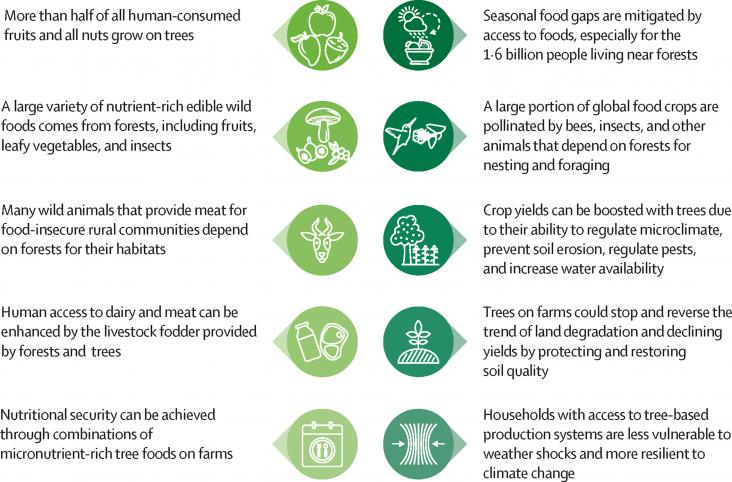Discusses how plant diversity may enhance carbon retention in soils as well as better ecosystem functions and crop yields.

This Viewpoint supports SDGs 2 and 15 by highlighting the importance of trees and forests to food systems, and exploring how the value of trees and forests in this regard can be enhanced to improve nutritional and environmental sustainability.

By studying species' responses to extreme climate events, a conceptual framework for predicting ecological recovery in terrestrial ecosystems is proposed.
This article supports SDG's 6, 11 and 15 through its discussion of the use of Phytoremediation as an economical and sustainable technology for environmental cleanup. Plant species known to utilize different phyto-mechanisms during phytoremediation of diverse pollutants are presented
The articles's focus on using Metal-Organic Frameworks (MOFs) to remove drugs and emerging pollutants from wastewater directly relates to several Sustainable Development Goals (SDGs). It particularly aligns with Goal 6 (Clean Water and Sanitation) by addressing the issue of water pollution and promoting the removal of harmful substances from aqueous environments. It also connects with Goal 14 (Life Below Water) and Goal 15 (Life on Land) by aiming to protect ecosystems and aquatic life from the detrimental effects of drug pollution, ultimately contributing to environmental preservation and human well-being.
The purpose of this study is to quantify the joint impacts of climate and human activities on grassland changes in Three-River Headwater Region (TRHR) after two phases of Ecological Conservation and Construction Project (Ecological Project).
This study quantitatively analyzed the response of fractional vegetation cover (FVC) to climate change and human activities in the Mu Us Sandy Land (MUSL).
The study assessed the perceptions of indigenous peoples on the Vietnam payments for forest environmental services (PFES) program. The majority of indigenous people were satisfied with PFES participation.
The Zambezi Riparian Region (ZRR) is a lifeline and home to ∼40 million people who depend heavily on the river basin for their livelihood.
An Article in support of SDGs 2, 13, and 15, assessing the environmental consequences and nutritional contributions of national food-based dietary guidelines while considering circular food system principles
